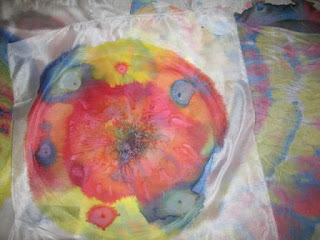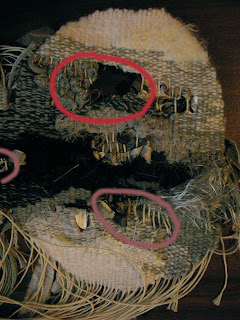I called in to the ATW today to get some wool for weaving and then headed on to the National Gallery Victoria (NGV) to see the Napoleon exhibition. It was wonderful - it also made me realise that I don't really know my Napoleonic history, I got quite confused about the different periods of government in France and how he got to be Consul, Emperor, etc. (There are some interesting links at the NGV site.) I was also surprised at how much of Europe he had under his control. Part of the exhibition was a history lesson for me.
There were various artworks, pieces of furniture, porcelains, jewellery and wonderful books of maps and botanical drawings on show. The botanical drawings were of flora of Australia, done during the 18th century, at about the same time the English were exploring the area. There were also drawings of the indigenous people and some of the animals.
It is not like now, when we can take a digital image and work on the drawings in the comfort of our studios - they must have been working away in rather primitive conditions. The works are wonderful to see.
It is amazing to think how close south-east Australia came to being a French colony.
It was also amazing to see the map of Australia that had part of the coast missing - it had not been drawn yet. The map was recognisably Australia. I cannot understand how they could draw such accurate maps simply by sailing around the country. I've always been mystified by how sailors navigated so accurately by the stars too.
There were a few tapestries that had been woven at the Gobelins workshop, which I was lucky enough to visit last year. That trip is being run again this year, almost the same, and I am going to follow their progress here, at a travel blog. I am already jealous, they are going to Stirling Castle to see the tapestries that are replicas of the Hunt of the Unicorn, which is housed at The Cloisters in New York, USA, and the Dovecot Studios in Scotland, something we didn't do last year.
 |
| Black swans, just like Josephine had at Malmaison. |












